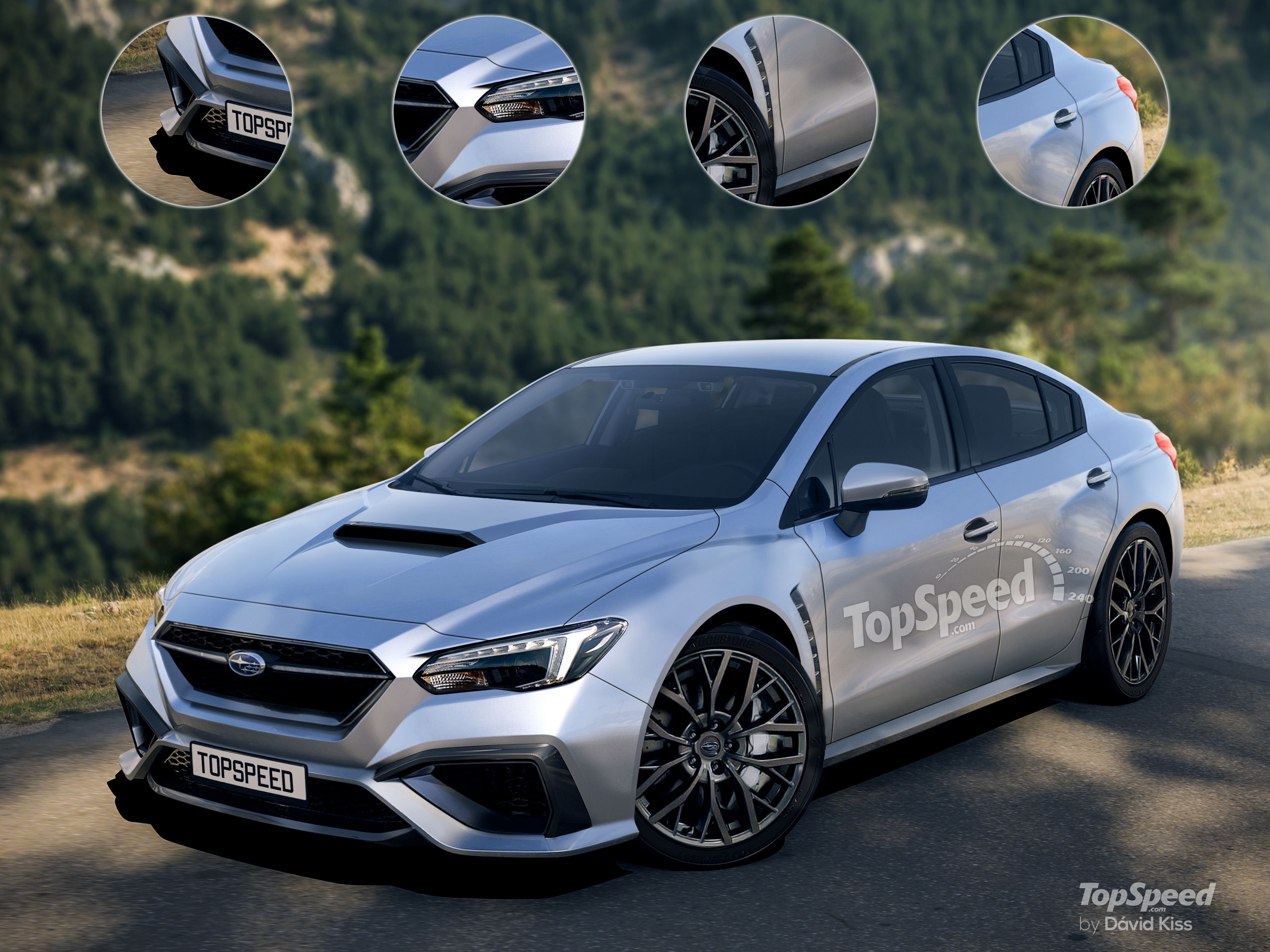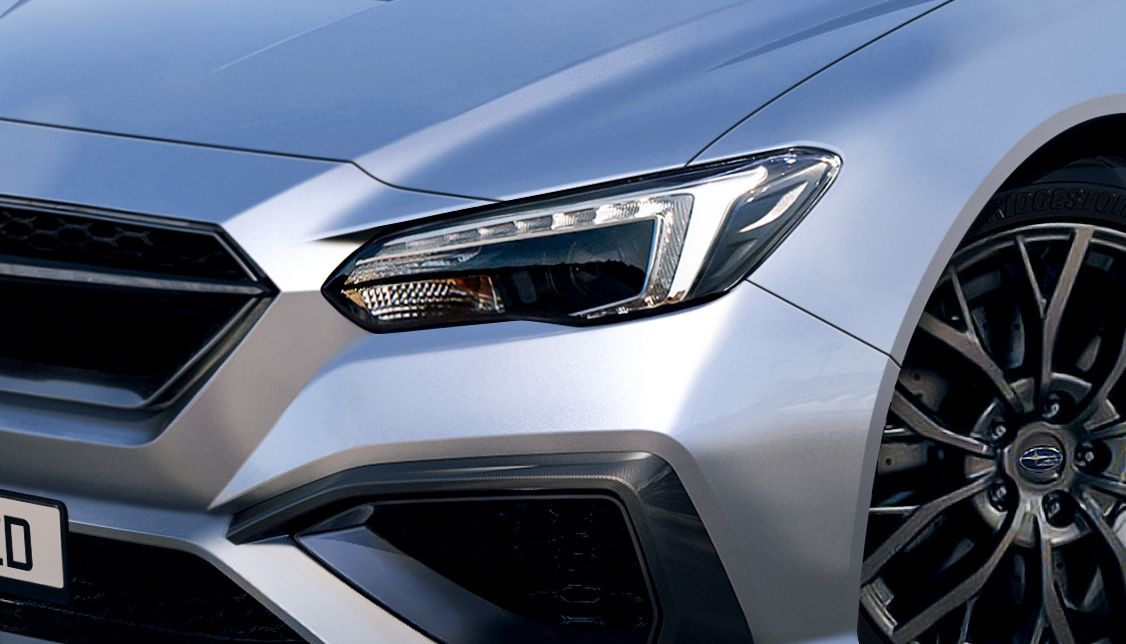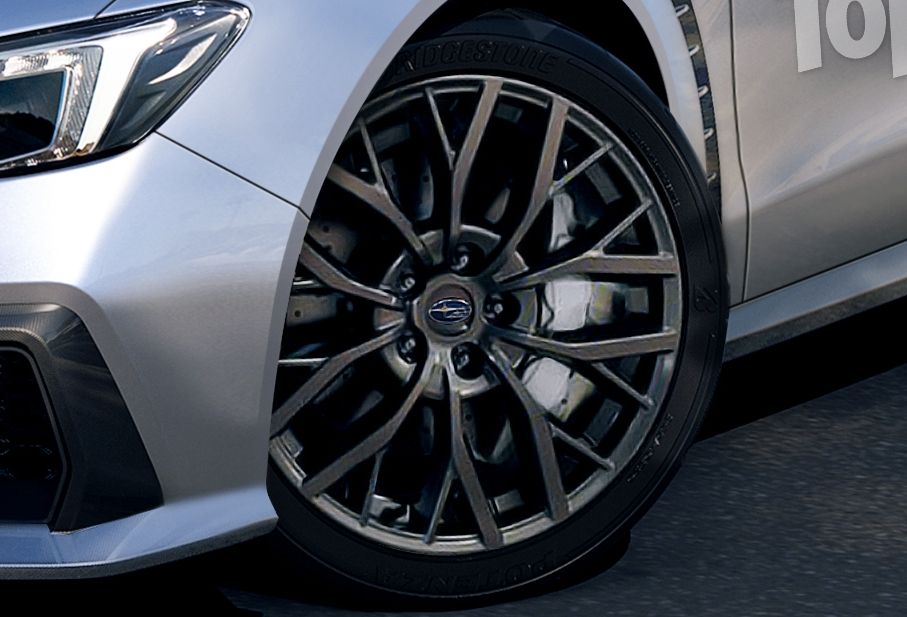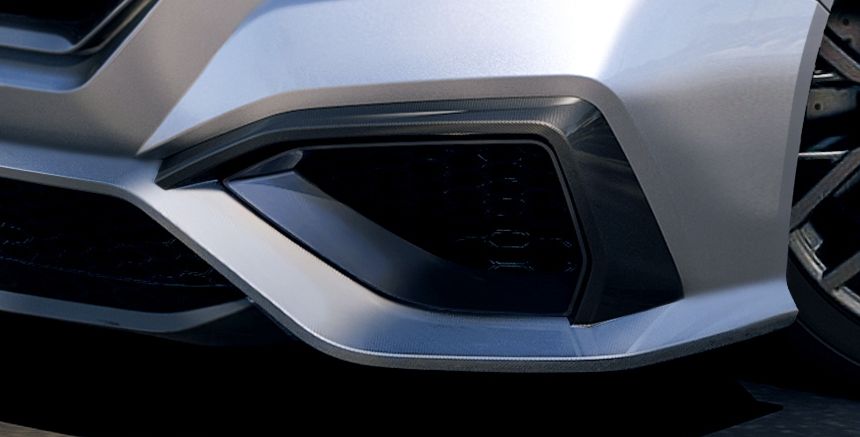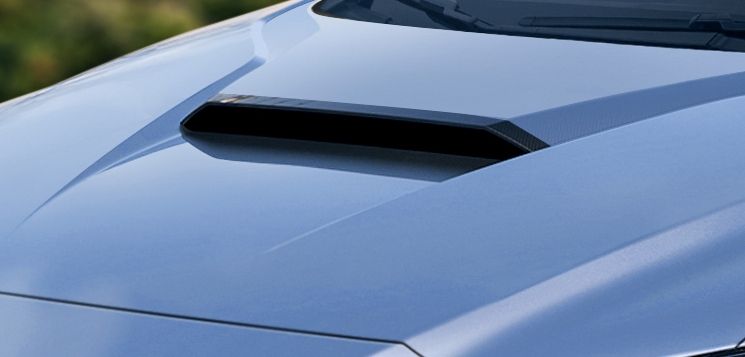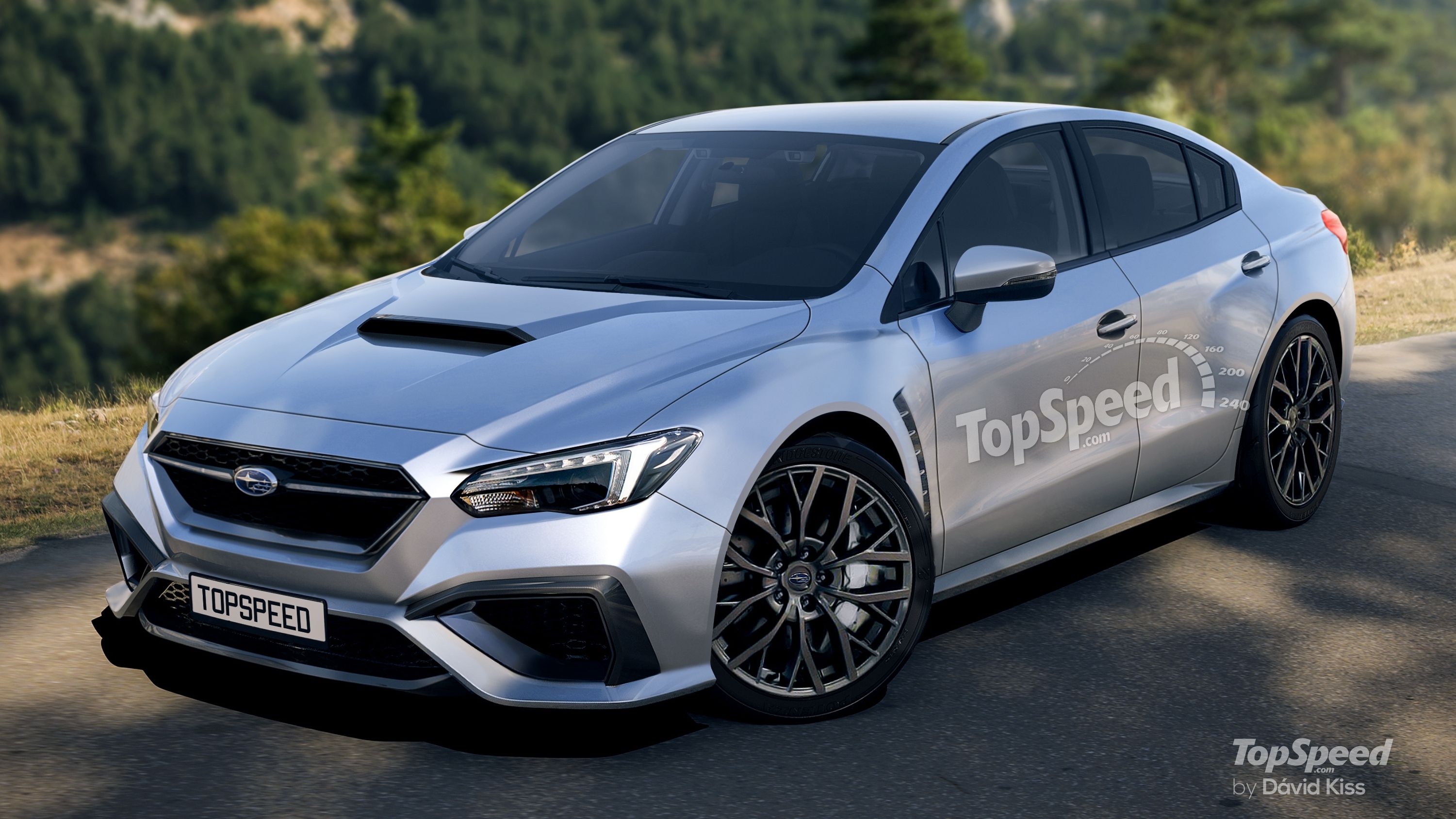Ever since its introduction in 1992, the Subaru WRX has promised enthusiasts a thick slice of the high-flying, sideways-sliding, gravel-spraying antics that made the six-star brand famous in the World Rally Championship. Thanks to its turbocharged flat-four engine, stout suspension set-up, speed-oriented interior, and wing-heavy exterior styling, the WRX has cemented its reputation as a machine capable of competition-style performance, but at a price that keeps all your internal organs inside you, rather than going to the highest bidder. Over the years, we've seen four generations of the 'Rex, with U.S.-based consumers getting their first taste in the early 2000's with the second-gen “bug eye” iteration. These days, though, the WRX is considered a bit long in the tooth. While still a solid performance buy, the alternatives are plentiful, while the WRX's updates mostly just spin the tires. In truth, enthusiasts are clamoring for an updated next-generation WRX capable of besting much fresher offerings from the likes of Ford and Honda.
Luckily, it appears as though Subaru is working on exactly that, as previewed by concepts like the Viziv Performance sedan that dropped at the Tokyo Motor Show back in 2017. But we're impatient, so we decided to create a rendering, put on our thinking caps, and write up a speculative review on what we think the next-gen WRX could bring to the table. Read on for the details.
Continue reading to learn more about the 2020 Subaru WRX.
2020 Subaru WRX
- Make: Array
- Model: 2020 Subaru WRX
- [do not use] Vehicle Model: Array
Exterior
Right off the bat, it should be pretty obvious that we took a lot of the inspiration for our rendering from the Viziv Performance Concept that Subaru dropped at the 2017 Tokyo Motor Show. Although not explicitly stated, it's obvious that this concept was Subaru's idea of what was possible for the next-gen WRX given the “Performance” name and the fact that when it was introduced it was the only Viziv study to get a four-door body style. Now, we also have the Viziv Performance STI dropping at the 2018 Tokyo Auto Salon, lending further credence that the six-star brand is weighing its options for a new-gen WRX.
Of course, it should be said that Subaru has a long history of giving us awesome-looking concepts that never actually get put into production, but hopefully that trend will end with the next WRX.
If Subaru really does put this impressive piece of design to good use, we'd expect one very handsome machine, chock-full of extra angles and geometric shapes. Let's break down the elements in play here, starting in front. The fascia is upgraded with loads of hard lines, including a six-sided grille bisected by a single wing line and the requisite six-star badge. Inside the grille, you'll find a matte-black insert with hexagonal shapes to let in the fresh air. On either side of the grille, the headlights get a check-marked shape that's angled down towards center of the vehicle, adding aggression the Scooby's expression.
We'd also expect C-shaped daytime running lights equipped with LEDs, as well as steering responsive main projectors (also with LEDs) to help illuminate around bends. Lower down, the fog lights in the corners are gone, replaced by large intakes fitted with the same hexagonal matte-black inserts as seen in the primary intake. A complementary lower intake slot completes the look, with pinched character lines giving it a splitter-type appearance. And of course, we can't forget the requisite hood scoop, which sits front and center and comes flanked by a pair of extra character lines to add even more visual beefiness.
Moving around to the sides of the car, we're immediately met by large flared fenders covering the front wheels. These meaty body panels add a ton of width to the front end, and do well to enhance the WRX's sporty demeanor. The rear-facing fender vents are larger this time around, offering cool horizontal strips that don't actually do anything, but look pretty good all the same. Under the fenders you'll find 18-inch wheels, made from alloy and boasting a motorsport-inspired BBS-esque multi-split-spoke design draped in a dark silver finish. We expect the WRX to come standard with 18's, adding an inch to the outgoing model's standard 17's. The rear fender flares also visually bulge the rear doors just below the door handles, while the window line rises up to give the car extra visual rake.
In back, the rear overhang is a smidgen shorter than before, giving the WRX a more rounded trunk line. We'd also expect a subtle trunk spoiler to come as an available option – if you'd prefer the big WRC-style wing, you'll have to upgrade to the full STI. The taillights wrap around into the rear fenders, while a diffuser element hugs the pavement, housing a quartet of exhaust pipes issuing the standard boxer rumble.
In terms of trim, we'd expect carbon fiber as an available option, plus a good deal of glossy black pieces as standard. The dimensions will also likely change, with the next-gen WRX gaining the traditional incremental increases to girth we've come to expect with each new product cycle. That means it'll probably be a bit longer, a bit lower, and a bit wider than the Impreza that came before. As a reference, we've included dimensions for both the current 2017 model year WRX and the Viziv Performance Concept from 2017 – look for the production model to fall somewhere in the middle of the two.
Finally, we'd love it if Subaru decided to revive the hatchback or wagon body style for the next WRX. Because after all, who doesn't like the perfect blend of performance and practicality that you get with a five-door 'Rex? Unfortunately, something like that isn't terribly likely, and we'll most likely be stuck with just a sedan. Shame.
Exterior Dimensions
|
2017 Subaru WRX |
2017 Subaru Viziv Performance Concept |
|
|
Length (inches) |
180.9 |
182.3 |
|
Width (inches) |
70.7 |
76.8 |
|
Height (inches) |
58.1 |
56.3 |
|
Wheelbase (inches) |
104.3 |
107.5 |
Interior
Note: current production model Subaru WRX pictured here.
The basics inside the WRX's cabin should go more or less unchanged. It'll still seat five passengers total, with a bit of space in the trunk for various things as needed. A pass-through feature in the rear bench will maximize practicality, as will various storage bins scattered here and there. Seat warmers will be a nice addition for those winter trips to the mountains.
In terms of layout and features, the WRX is mostly concerned with the basics for going fast. Sink into the supportive sport seats (optionally offered with even bigger bolsters courtesy of Recaro), and you'll find a flat-bottom steering wheel directly in front of the driver. Sizable hand grips are found at the 10 and 2 positions, while a series of thumb-operated buttons keep you engaged with driving while simultaneously operating the infotainment systems. Meanwhile, in the foot well, there's a set of pedals carved from alloy and finished with a brushed-metal appearance for good looks, plus rubber inserts for extra grip when executing quick heel-toe maneuvers.
In the center console, there's a handsome-looking shift knob topped by a red shift-pattern diagram and ringed with a brushed-metal surround. Behind the shifter is the handbrake and a duo of cup holders, plus a decently sized armrest storage bin. The center console consists of a touchscreen handling the infotainment duties, as well as a trio of rotary knobs for the climate control. On top of the dash is a secondary screen for extra info, such as boost pressure, outside ambient temperature, and more.
Adding a dash of extra performance flavoring is carbon fiber trim throughout, including on the dash, while Alcantara is used for the seats. Leather trim was also added to the flat-bottom steering wheel and shift knob, with the dark-colored upholstery offset by loads of red contrast stitching.
As for the infotainment set-up, the WRX will undoubtedly come equipped with Subaru's latest Starlink multimedia gear, which tosses in safety features like Automatic Collision Notification, Enhanced Roadside Assistance, Stolen Vehicle Recovery, and further remote services. The entertainment side of it tosses in smartphone support, app support, voice commands, and navigation as well.
Behind the wheel, drivers will monitor engine rpm on the left and road speed on the right, while a supplementary TFT display is situated in between. Moving over to the dash, there's a large touchscreen handling infotainment inputs. Sizing for this will be at least 6 inches, matching what's available on the current model, but we wouldn't be surprised to see an upgrade to a 7- or 8-inch display, either. Further options will include upgraded navigation, and if Subaru is smart, it'll include smartphone support from the likes of Apple CarPlay and Android Auto.
Finally, the WRX was never a model you'd get for superior interior comfort and easy cruising. This is still a car that's very much focused on performance as opposed to backside coddling, but Subaru seems concerned enough about passenger comfort to give the model modest improvements in terms of NVH. As such, the materials should see an upgrade, and we'd love it if Suby included a few modern assist systems. Features like adaptive cruise control, automatic braking, and smart shifting for the automatic transmission would make the WRX much more friendly as a daily driver – just so long as they're capable of being turned off, of course.
Drivetrain
Note: 2018 model year Subaru WRX pictured here.
The rumbling heart of any WRX is the flat-four engine mounted under the hood, plus the requisite turbocharger and snarling exhaust. Like a cherry on a sundae, this aluminum lump is topped by a large intercooler, which is bolted to the block in order to be force fed by the WRX's iconic hood scoop. And yes – it'll still offer a good deal of thrash when you put your foot to the floor.
With the arrival of the next-gen model, we'd expect Subaru to once again employ the FA20 2.0-liter engine. First introduced with the VA generation in 2014, the FA20 changes it up from the long-serving EJ series used previously. Unlike the last engine generation, the FA20 moves the turbo placement away from the right-hand side of the block and closer to the front of the car, which keeps all that turbo heat from blasting the number three cylinder into oblivion. The new engine also offers a broader torque curve than the EJ, with peak output rated at 268 horsepower and 258 pound-feet of torque.
While the current tune is decent for the segment, we hope Subaru decides to up its game and give the base model WRX the real power boost it deserves. We think 300 horses wouldn't be overreaching, just so long as the STI version can best the Focus RS with well over 350 horsepower. Having that much go at your disposal would also help justify the car's steady rise in pricing.
As for the rest of the drivetrain, the WRX will come with both a CVT (ugh) and a manual gearbox (yay!). Obviously, if you're on this website, you're gonna wanna go with the manual to get the most from your experience behind the wheel, as slotting through the six-speed provides a level of engagement and fun that two-pedaled variants simply can't match. Putting the power to the pavement is a standard symmetrical AWD system.
In terms of performance numbers, the WRX will zing its way to the 60-mph mark somewhere in the low-5-second to high-4-second range, with top speed clocking in at around 150 mph.
It should also be noted that speculation points to the possibility of Subaru giving the WRX a hybrid powertrain, with recent reports hinting at the addition of extra batteries and an electric motor or two to help the four-door meet rising emissions standards. That might include the addition of a motor-driven rear axle, which would be a serious departure from the traditional symmetrical AWD system we've enjoyed in the past. While improving efficiency and possibly adding extra agility in the corners, such a system would also burden the 'Rex with significantly more weight to balance it out.
Either way, the dainty little speed machine we've known before is changing, and it remains to be seen exactly how.
Chassis And Handling
While the current WRX is based on the older fourth-generation Impreza platform, we fully expect the next-gen version to come underpinned by the most-recent fifth-gen architecture. Introduced in 2016 at the New York Auto Show, the fresh bones will provide the WRX with a much-needed update in terms of weight-savings and torsional rigidity.
In addition to the new architecture, the next-gen WRX will also come with a redesigned suspension to make the most of it, offering a balance between comfort and sportiness that leans decidedly towards the performance side of the equation. There should also be a good deal extra chassis stiffness, putting the suspension components to work soaking up all the bumps and imperfections on the road.
In the corners, the WRX should come with some nice, meaty brake components, something capable of handling the track without any serious fade issues. Optional big Brembo stoppers from the STI model would be nice as well. There should also be updates to the power steering, with a quick ratio, and possibly the addition of a speed-sensitive feature to boot.
Unfortunately, with the recent 2015 model year update, the WRX brought along a considerable 50-pound weight gain, and odds are the next-gen will be a bit portlier as well. The model currently tips the scales at 3,272 pounds, but we wouldn't be surprised to see the next-generation vehicle weigh in at over 3,300 pounds or more, even with a lighter platform under the skin.
Most of these weight gains will be the result of safety enhancements, as well as NVH improvements like thicker glass and more sound insulation, all of which will be added in the name of making the WRX more livable as a daily driver.
There will be options for carbon trim, but again, this is almost entirely for aesthetics purposes and won't actually impact the final curb weight. That said, a sunroof delete (offered with the current Performance Package) will make a bit of a difference.
Finally, we would like to see active torque vectoring to help make the most of the available grip. And, if the WRX does go hybrid with the next product cycle, advanced torque vectoring is an absolute must.
Prices
The WRX currently starts at $26,995, which, all things considered, is pretty pricey, especially when you start adding in options like premium trim, performance parts, and the like.
The next-gen vehicle will hopefully stay put in terms of pricing, but with the upgrades outlined above, we could definitely see Subaru adding a few thousand bucks to the MSRP.
Competition
Ford Focus ST
When it comes to having fun on a budget, the Ford Focus ST offers one helluva package. Packing as much as 252 horsepower and 270 pound-feet of torque under the hood thanks to a turbocharged 2.0-liter four-cylinder engine, the Focus ST makes do with FWD (as opposed to the Suby's AWD), but don't count it out just yet. It's still got enough motivation to hit 60 mph in about 6 seconds, plus suspension tuning that's sure to elicit grins in the corners. Toss in the five-door practicality, not to mention a price tag of $25,075 (well below that of the Subaru), and this might be the better option for some.
Read our full review 2018 Ford Focus ST.
Honda Civic Si
Like the Focus ST, this H-Badge icon is a fantastic choice for those looking to add a solid dose of fun to their commute. You can get it in either a four-door or two-door body style, both of which send over 200 horsepower to the front axle thanks to a turbo four-cylinder and six-speed gearbox. This thing is a joy to drive, and it's got loads of nice features in the cabin as well. And at just $24,100, it's pretty affordable compared to the WRX.
Read our full review on the 2018 Honda Civic Si.
Conclusion
When it first hit U.S. shores over 15 years ago, the Subaru WRX was a bit of an anomaly. Packing a high-strung turbo engine, four-door practicality, and AWD grip, the WRX stood in stark contrast to the RWD, V-8 sports cars traditionally catered towards U.S. audiences. However, it's subsequent success quickly prompted a deluge of zippy sport compacts to flood the market, and now, we're spoilt for choice.
However, in the decade and half since its arrival, the WRX hasn't really changed. The formula has remained unabashedly static, and while the competition ramps up the pressure, Subaru's performance superstar is starting to look rather old school.
Now, the WRX finds itself in a weird no man's land between cheaper enthusiast cars like the Focus ST and more expensive options like the Civic Type R and Focus RS. Yeah, it's got that standard AWD, and yeah, it's pretty quick – both great justifications for the extra outlay. But for newcomers to the segment looking to save a few bucks, the question “Is it worth it?” must be asked.
Hopefully, Subaru will make the question moot with the next generation.
Model History And Background
Subaru first introduced the WRX in November of 1992. The name is an acronym referencing the automaker's participation in the World Rally Championship, standing for either “World Rally Cross” or “World Rally Experimental,” depending on who you talk to. As such, the four-door sports car got beefy suspension components, oodles of AWD grip, and a thumping turbo engine under the hood scoop. Subaru also sold an even more hardcore version called the Type RA, boasting race-ready status thanks to a lighter curb weight (no A/C, no power windows, less sound deadening), no ABS, a beefier engine tune, and shorter gearing.
While Japanese and European consumers enjoyed the WRX for years, U.S. audiences didn't get it until the early 2000's with the second-gen GD model. After a series of visual upgrades, Subaru introduced the third generation in 2007, with power up-rated to 265 ponies and 244 pound-feet of torque, blessing the model with a 0-to-60 mph time in the low-5-second to high-4-second range.
In 2014, the current fourth-gen WRX hit the scene. This time around, the more practical hatchback and wagon style got the axe, with new models only offered in a four-door sedan. Subaru also ditched the aging EJ engine line in favor of the new FA20.
References
Subaru WRX
Read our full review on the 2018 Subaru WRX STI.
Read our full driven review on the 2018 Subaru WRX STI.
Read our full review on the 2018 Subaru WRX.
Read our full review on the 2017 Subaru Viziv Performance Concept.

